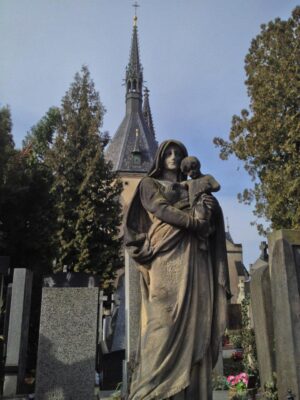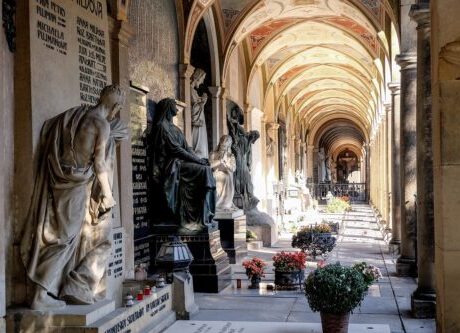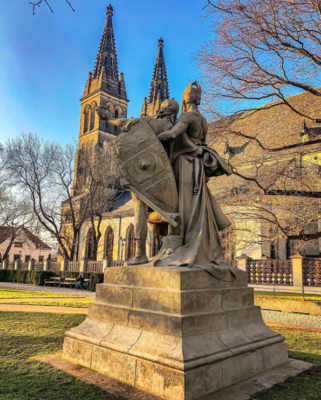Explore Vyšehrad
Explore Vyšehrad. The city’s second castle sits on a rocky promontory above the Vltava River, just south of Nové Město. The castle’s origins intertwine with some of the oldest national tales & legends.
According to the myth Princess Libuše, the legendary progenitor of the Přemyslid dynasty which ruled in Bohemia for nearly 500 years, foresaw the future glory of Prague from her seat on the hill of Vyšehrad. Myth aside the first definitive evidence for the existence of the hill fort of Vyšehrad, the denarii of Boleslav II, comes from the mid-10th century, about 70 years or more after the establishment of the Hradčany castle.
The reign of Vratislav II (1061-1092) opened a new chapter in the history of Vyšehrad Castle. This prince, King of Bohemia from 1061 and Poland after 1085, had chosen the castle of Vyšehrad as his royal residence.
The powerful king strengthened the castle’s fortifications and built a permanent palace more suited to the aspirations of the Bohemian rulers who would follow. He established what is probably Prague’s earliest Romanesque rotunda, the Rotunda of St Martin, and inaugurated the Vyšehrad Chapter.
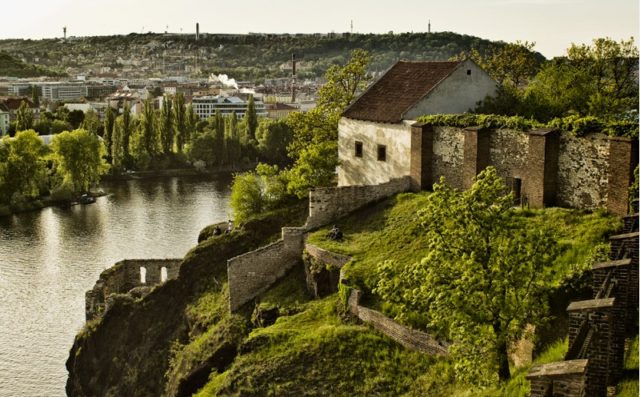
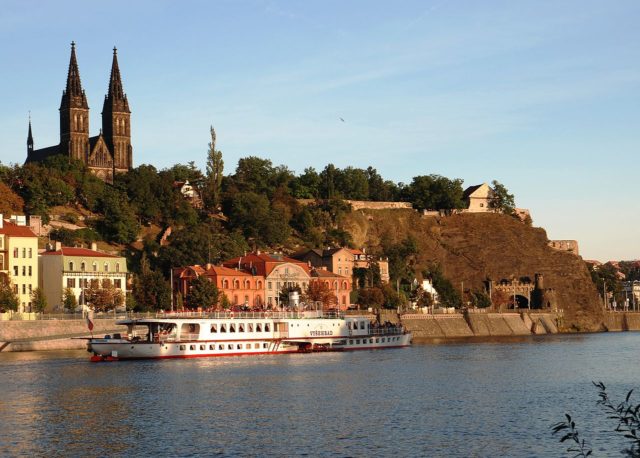
The Chapter was excluded from the authority of the Bishop of Prague and was directly subjected to the Pope. It benefited from the great attention paid to it by many Bohemian sovereigns and obtained a range of political and economic privileges. Vratislav II´s successor, Soběslav I (1125-1140), also took an interest in the artistic decoration of the churches and the overall importance of Vyšehrad.
The coronation of Vladislav II in 1140 brought an end to the Vyšehrad’s primacy over Hradčany Castle. Vyšehrad regained its importance under Charles IV. Charles IV converted Vyšehrad into a stone fortress, joining it to the ramparts of Nove Mesto, built a Gothic Royal Palace, the Capitular church, and the great Špička (Peak) Gate.

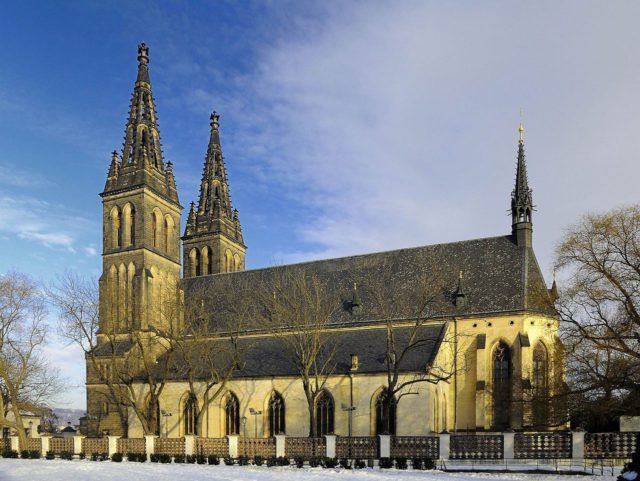
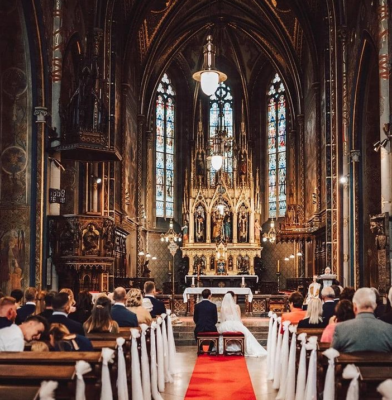
During the Hussite Wars, however, the whole royal precinct was destroyed. After the mid-17th century, Vyšehrad became a Baroque fortress with its own military garrison and thenceforth remained under military jurisdiction until 1911 when it was handed over to the city.
The current appearance of Vyšehrad was largely determined in the second half of the 19th century when a number of nationalist-oriented provosts; of these who determined the modern appearance of Vyšehrad and its major landmark, the neo-Gothic Church of Saints Peter & Paul rebuilt to a design by J. Mocker and F. Mikeš who respected the disposition of Charles IV’s initial Gothic design. It was at that time that the idea came up for a cemetery for important Czech nationals at the site of Peter and Paul’s graveyard.
It took many years to build the Pantheon that is now Vyšehrad Cemetery a unique gallery of funerary sculpture harmoniously fitting its surroundings and an expression of Czech artistic development from the second half of the 19th century to the present day. It is also the final resting place of over 600 personalities from the fields of culture, science, and politics.
Today Vyšehrad holds many of the elements that make Prague such a mesmerizing city. An ideal place for a stroll, a vantage point with breathtaking views of the city, and a place packed with historic monuments that are definitely worth exploring.
